BEST RIM BRAKE UPGRADE WHEELS

It’s a truism that one of the best ways to improve your cycling performance is to upgrade your wheels. The right set of rim brake upgrade wheels can provide you with better speed, acceleration, climbing, handling, braking, comfort, and confidence across the type of terrain you regularly ride.
While most new bikes for road cycling enthusiasts come with disc brake wheels these days and wheel makers have shifted their product development and production to support them, many of us still ride great rim brake road bikes and may need to replace or want to upgrade them.
Related: Looking to replace or upgrade your disc brake bike wheels? Click Disc Brake Wheelset Reviews
Related: Not sure what kind of wheels to get? Click Road Bike Wheels – How To Choose The Best For You
I and my fellow testers have reviewed a few dozen rim brake wheelsets over the years and shared them with you in many posts. Fortunately, many of the best rim brake upgrade wheels we’ve recommended are still being made, even if most we’ve evaluated no longer are.
In this post, I share with you the rim brake upgrade wheels we recommend in the alloy, value-carbon, aero, climbing, and all-around categories. If you want to replace or upgrade your rim brake wheels, these are the best ones to improve your ride.
In The Know Cycling is ad-free, subscription-free, and reader-supported. If you want to help keep it rolling without any added cost to you, buy your gear and kit after clicking the store links on the site. When you do, we may earn an affiliate commission that will help me cover the expenses to create and publish our independent, comprehensive and comparative reviews. Thank you, Steve. Learn more.
BEST VALUE ALLOY – CAMPAGNOLO ZONDA C17
The Campagnolo Zonda C17 wheels are both stiffer and more comfortable for light through heavy riders than the original or “stock wheels” that come with most rim brake bikes.
They handle and accelerate better than stock wheels and are similar to other alloy upgrade wheels. Their hubs require little maintenance, are long-lasting, and relatively quiet.
You can use standard clincher tires and tubes with these wheels.
One of the least expensive true upgrade wheels at US$440/€430/£360, you can order them using these links to Tredz (10% off with code ITKTDZ10).
Read my full review here.
BEST PERFORMING ALLOY – HED ARDENNES RA PRO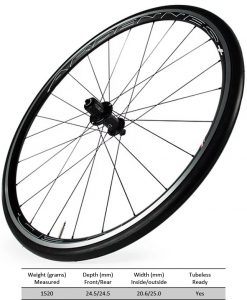
One of the first rim brake alloy upgrade wheelsets to go to a wider rim profile, the HED Ardennes RA Pro is still one of the widest available. Combine them with 28mm tires, and these are the most comfortable alloy rim brake wheels we’ve tested.
They also handle well, have worry-free hubs, and are made by a long-established wheel maker with a prestigious brand name.
You can ride them with tubed clincher tires or tubeless. If you want to start riding tubeless or already prefer them, the Ardennes rims are one of the easiest alloy wheels to set up.
At US$900, they are available at BTD (BikeTiresDirect) and Performance Bike.
Read my full review here.
BEST VALUE-CARBON – BONTRAGER AEOLUS PRO 5 TLR
 Wheels in this value-carbon category have different performance strengths. As the category name suggests, they also bring weaknesses that you may be willing to accept, given the savings you can get over more expensive performance-carbon wheels with few weaknesses.
Wheels in this value-carbon category have different performance strengths. As the category name suggests, they also bring weaknesses that you may be willing to accept, given the savings you can get over more expensive performance-carbon wheels with few weaknesses.
The Bontrager Aeolus Pro 5 TLR is the best value-carbon rim brake wheelset we’ve tested at going fast on relatively flat terrain. It is stiff, rolls smoothly, keeps its momentum once at speed, and handles confidently. That’s a combination we’ve not experienced in other wheelsets at or near its US$1500, £1350, €1400 price.
It isn’t a light or lively wheelset, the rear freehub coasts with a buzzy sound, and you need to manage your way through crosswinds.
The rims and components are well-built. If you crash them – whether on the road or entering your garage – Bontrager will replace or repair the wheels for free in the first two years or at a 50% discount thereafter. That’s far better than most Chinese wheelset manufacturers and new brands that source their wheels from them and sell in the same price range as these Bontragers.
Read my full review here.
ABOUT PERFORMANCE-CARBON WHEELS
For a performance comparison of what matters most in choosing between alloy, value-carbon, and performance-carbon wheels, go here.
At over US$2000/€2000/£2000 for a top performance-carbon wheelset, you need first to ask yourself whether you are so committed to your current rim brake bike to spend good money on wheels that you very likely won’t be able to transfer to your next new bike.
You might be better off putting that money toward the future purchase of a disc brake bike, the predominant and perhaps only type of new enthusiast-level road bike you’re able to buy now.
If you do want to buy a new performance-carbon rim brake wheelset, know that your choices are limited. Many of the best wheelmakers, including Bontrager and Roval, no longer make this category of wheels, and ENVE stopped making them in 2022. Others that still do, like Campagnolo and DT Swiss, don’t distribute them widely in some major geographical markets.
BEST ALL-AROUND – ZIPP 303 FIRECREST
Both of the all-around rim brake wheels I previously rated best performers, the Bontrager Aeolus XXX 4 and Zipp 303 NSW, are out of production. If you can find either of them used in good condition at approximately half their original price, that would be a good option. Other similar generation all-around rim brake wheelsets we tested simultaneously from Campagnolo, Easton, Mavic, and Roval did not perform to the level of the Bontrager or Zipp wheels.
Zipp makes a rim brake version of the 303 Firecrest that is one of the best rim brake upgrade wheels still in production. It was updated for the model year 2021 with the new ZR1 hub set, one we’ve tested and that has performed well for our reviews of the 303 and 404 Firecrest disc brake models. The textured brake track used on 303 Firecrest is also one of the better ones for slowing and stopping on dry downhill and wet roads.
It’s a good-looking wheelset and is available for US$2300/€2135/£1750 at Competitive Cyclist, BTD (BikeTiresDirect), and Sigma Sports though you may need to buy the front and wheels separately from the same or different stores.
Find what you're looking for at In The Know Cycling's Know's Shop
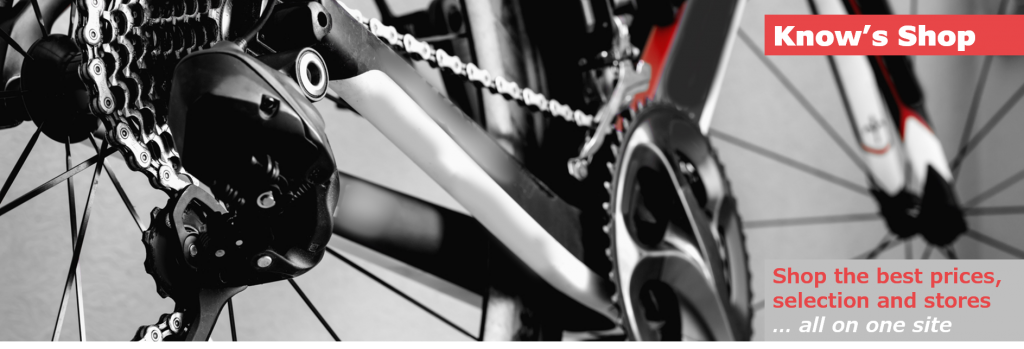
- Compare prices on in-stock cycling gear at 15 of my top-ranked stores
- Choose from over 75,000 bikes, wheels, components, clothing, electronics, and other kit
- Save money and time while supporting the site when you buy at a store after clicking on a link
WHAT YOU NEED TO KNOW
Click on any red statement below to go directly to that part of the post
WHEELS ARE THE FIRST THING YOU’LL WANT TO UPGRADE
The unfortunate reality is that most $2500 to $5000 modern bikes we road cycling enthusiasts buy come with inexpensive wheels that aren’t at the same level of performance as the frames that sit on them or the drivetrain components that transfer your power to them.
While it may seem crazy, many cyclists upgrade their road bike wheels within a couple of years after buying a new bike, which of course, comes with a brand-new set of wheels. If you didn’t get upgrade wheels for your rim brake bike when you first bought it, or it’s been several years since you did, you may need to replace it or just want to upgrade it for better performance.
Why do cycling enthusiasts make a road bike wheel upgrade one of their first purchases after buying a new bike? Is there a real benefit in your riding performance and enjoyment, or is it just one of those bike industry marketing mantras to get you to buy more of what they’re selling?
Endurance or sportive bikes that enthusiasts prefer for long, comfortable rides usually come equipped with wheels that aren’t as forgiving or compliant as the frame. Wider tubed or tubeless tires inflated to lower pressures than you can use with original wheels to dampen the road imperfections won’t make the wheels themselves any more forgiving. They can also reduce the wheelset’s responsiveness and won’t do anything to improve the precision of your handling.
It’s kind of like putting lipstick on a pig. Prettier, but still a pig.
Carbon rim brake bikes made to be ridden or raced aggressively in the enthusiast price range often came with wheels that also aren’t laterally stiff enough to take advantage of the frame’s stiffness and actually dampen the responsiveness the bike is capable of when you want to accelerate, go aggressively into a turn, climb out of the saddle or sprint for the line.
The wheels that came with your bike, commonly known as “stock wheels,” and many you may have upgraded to five years ago, also tend to be heavy by modern-day standards. They usually weigh at least 200-300 grams more than a good road bike wheel upgrade, an amount most enthusiasts will notice when you want to accelerate from a stop, increase your speed during a ride, or do long, steep climbs in the mountains.
Stock wheels also typically have hubs that are durable but don’t roll as smoothly as those that help you maintain your speed with less effort. The rims are shallow and boxy and provide no aerodynamic benefit that deeper ones with rounder noses and sides do and have a pretty basic look to them.
Unfortunately, you can’t upgrade your older stock or upgrade wheels merely by putting a set of wider 28mm tires on them. Doing this will make your ride on them more comfortable, and that is one of the reasons why so many of us might do it.
With wider tires, you can inflate them to a lower air pressure while still having the same amount of air needed to hold your bike and body weight in what is now the larger volume of space between your tires and wheels. Lower-pressure tires are more comfortable because they absorb more of the road’s imperfections.
But, putting wider tires on the same width wheels can also make your bike slower and your handling worse if you go too wide and inflate them too low. And, wider tires without wider wheels certainly won’t make your bike any more responsive, accelerate any faster, get you in and out of turns more precisely or roll noticeably better or faster, all of which should happen, along with improved comfort, from upgrade wheels.
A tire that’s too wide for its rim is also more likely to experience a pinch flat when you are leaning into a turn or cornering at a high speed. The tire bead can also pull away from the rim hook in the turn, also resulting in a flat. Not good, to say the least.
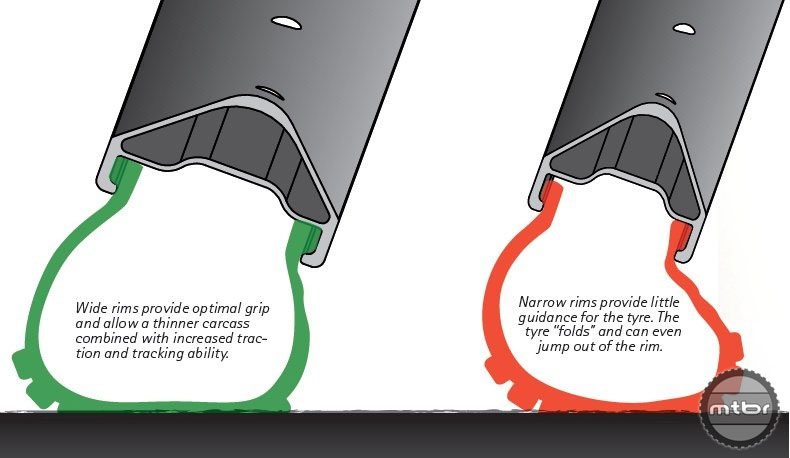
A wider tire and a wider rim together provide better handling. The wider rim sets the foundation for the wider tire to keep its shape better, as you can see in the drawing on the left above.
The square tire shape of a wider rim supporting a wider tire provides a wider “contact patch” than on a narrower tire. That produces more of a lightbulb tire shape. While the total area of the tire patch for both tires is the same as long as your weight and the tire pressure are the same, that area spreads further across the width and less along the length of a wider tire.
So how wide should you go with your wheels and tires and what combinations are best? It depends on whether you prioritize comfort or speed and handling or whether you want the best of both and, as always, what your budget is.
I’ve written a separate post here that gives you my take on what mix of comfort, speed, and handling you can expect with different tire-rim combinations.
Of course, tires, rims, hubs, and spokes aren’t developed in isolation. Among the wider wheels I’ve reviewed, you’ll see more rounded rim shapes, more straight-pull spokes that connect the hubs and rims for higher reliability and easier replacement when necessary, and more tubeless-ready wheelsets than ones that are strictly set up only for tubes and tires to reduce pinch flats at lower pressures.
You’ll also find wider rims with the same width between hub flanges to make for a bigger angle for the spokes running between them. And you’ll see wheels with great distance between the hub flanges or larger diameter flanges that also make for bigger angles. All of this theoretically creates more laterally stiff wheels, something that should be welcome for heavier and stronger riders.
Using tubeless tires instead of the traditional tube and tire combination can provide you still more comfort on top of wider wheels and tires. While there is nothing inherently more comfortable about a tubeless tire, you can run them at 10 psi or so lower pressure than you would a tubed tire to make the riding experience more comfortable without noticeably affecting other performance characteristics.
At lower pressures, inner tubes and tires will move more independently when you hit a bump or some road debris and you are more likely to get a pinch flat when the tube rubs against the tire. With a tubeless tire, you don’t have this concern.
WHAT MATTERS MOST IN CHOOSING RIM BRAKE UPGRADE WHEELS
I consider about 20 criteria – either performance, design, quality, or cost-related – when making my wheelset recommendations.
Here’s a summary of those criteria. You can read an in-depth description of them here.
Performance: Versatility, aerodynamics, stiffness, acceleration, comfort, handling, rolling smoothness, and braking are the key measures I’ve used to assess wheelset performance.
Design: Design defines how manufacturers want their wheelsets to perform. Sometimes they perform as designed, sometimes not. The key design criteria are wheel weight and material, rim depth, width and profile, hub and spoke selection, and brake track and wheel finish.
Quality: Durability, warranties, and service/support are the selection criteria that define wheelset quality.
Cost: While you often get what you pay for, some wheels cost a lot more than others, with only a tenuous relationship between cost and performance, design, or quality. Non-custom wheelsets north of $2000 appear to be priced based on their brand name, business model, product and market strategy, and product volume more than any other factors.
Note that I do put an emphasis on performance and cost-related criteria. Quality is a go-no-go consideration. I won’t write a review on anything that is poor quality, and I’ll note those products that have an exceptional quality level or longer than normal warranties.
Wheel makers have for years marketed wheels around some of the design factors – wheel weight, rim width and profile, hub materials, spoke shape and butting, etc. – because they are easier to quantify and promote. Specs and design factors often take up the first half (or more) of many reviews.
The more important and harder to describe and quantify performance factors including stiffness, comfort, handling, acceleration, braking, aerodynamics, and rolling smoothness are what truly separates one wheelset from another and is where I like to focus my attention.
There is usually a relationship between price and performance. Generally, you have to spend more to get something that performs noticeably better.
I find it’s best to know what you are willing or able to spend and then seek the best performance you can get within that budget.
As a guide, here’s the range of what different categories of rim brake upgrade wheels will cost.
- Stock: US$150-$300/€125-€250/£100-£200
- Alloy: US$400-$1000/€400-€1000/£300-£800
- Value Carbon: US$1000-$1500/€900-€1400/£800-£1300
- Performance Carbon: US$2000+/€2000+/£1800
FULL REVIEWS OF RECOMMENDED RIM BRAKE UPGRADE WHEELS
Campagnolo Zonda C17 – A stiff wheelset comfortable enough for Moose and Squirrel
The current model Zonda C17, introduced in 2017, increased a couple of millimeters to 17.0mm wide inside (measured between the bead hooks) and about 22.5mm outside (across the brake tracks). Little else about the wheelset changed. The Zonda still has a box rim profile, steel bearings, aluminum shell hubs, signature 3-spoke groupings around the rear wheel, low profile alloy rims (measured 24.4mm front, 27.2mm rear), middle of the pack weight (measured 1537 grams) and use tubed and clincher tires only.
It also still remains a bargain at a market price of US$440/€430/£360. You can order it by clicking on these links to recommended stores Tredz (10% off with code ITKTDZ10).
The good news for stout riders is that the wider Zonda remains very stiff alloy rim brake wheels. My 200lb/90kg (or so) friend and fellow tester Moose reported that it has the best out-of-the-saddle stiffness while climbing of any alloy bike wheelset he’s ridden. And I call him Moose for both his strength and weight, so that’s saying something.
For a squirrel like me at 150lbs/68kg who finds many wheels plenty stiff for what I do to them, the Zonda is noticeably stiffer and seems to transfer every last watt I can put out with utmost efficiency.
The big question before riding these Zondas was, would the extra width make them less harsh than the 2016 and earlier models, ones that only a heavier rider could love and for their stiffness rather than their compliance?
I mounted them up with 25C Michelin Power Competition tires at 85 psi front and 90 psi back and found them middle-of-the-pack comfortable. Neither harsh nor plush. Moose, who rode them closer to 100psi, felt they rode pretty smoothly on the typical unevenly paved and occasional bumpy roads he normally rides.
While they might handle better with 23C tires at 5-10psi higher pressure or be more comfortable on 25C tires inflated 5-10psi lower, the size and pressures that Moose and I ran them provided for a great combination of handling and comfort. I also recognize that with all the hype around wider tires, few will buy these wider Zondas and put 23C tires on them. That’s ok because they are too shallow to get any real aero benefits from them, even if the inflated tire width were narrower than the rim width to improve airflow.
The hubs are also solid, middle-of-the-pack performers. They certainly aren’t the fastest to accelerate but they aren’t slow. They aren’t super quiet but also don’t put out the clickety-clack of louder hubs that some riders love. Overall, reasonably good accelerating, rolling, and sounding hubs that aren’t going to set themselves apart from the others for these qualities.
In summary, the Zonda C17 addresses one of the biggest issues with stock wheels – lack of stiffness – with a solution that works for riders large and small, the latter thanks to the little bit of added width.
Perhaps the best news for Campy and Fulcrum fans (I’m a fan of good wheels, not of brands) is that all of the variants of the Campy Shamal and Fulcrum Racing lines have moved to 17C widths. The bad news is that they haven’t gone to 19C widths and I don’t expect they will.
The Campagnolo Shamal Ultra C17 (price compare here) and twin Fulcrum Racing Zero C17 (price compare here) are the flagship alloy bike wheels from Campy, essentially the same wheels and from the same company under different brand names.
They are part of lines that also include the Campagnolo Zonda C17 /Fulcrum Racing 3 (the latter now also made in the 17C width), which run at half the market price of the Shamal Ultra/Racing Zero, to the Campagnolo Shamal Mille C17 (here)/Fulcrum Racing Zero Nite C17 (here), the models with blacked-out brake tracks that sell for even more.
These wheelsets all share the same rims and spoke patterns with differences in rim etching, brake treatments, spoke materials, hub shell materials, bearings, freewheel, and flange materials. Whether you would notice any performance differences between these wheels or could justify the price differences is for each of you to decide. I, for one, can’t and am just happy to have a decent upgrade option at a great price.
I recommended the last, narrower model Zonda as the best alloy bike wheels for 175lb/80kg and heavier riders. If you need or want a stiff wheel and budget is your first consideration, the Zonda C17 should be your first stop for riders of all sizes and my recommendation as the Best Value among your rim brake upgrade wheel choices.
HED Ardennes RA Pro – An innovator that combines performance and prestige
HED has been one of the leaders in the wide-rim movement with the Ardennes. First introduced with wide rim dimensions and a 24.5mm deep V-profile, HED went wider with the Ardennes Plus model in the 2014 season. It now measures at 20.6mm inner and 25mm outer width, one of the widest alloy rim brake wheels still available.
Renamed the Ardennes RA (for Rim Alloy) in 2020 but unchanged from the earlier Plus rim, the Ardennes’ added width enables the same tire to square up that much more and contributes to better aerodynamics and handling. While I can’t speak to the relative aero performance of these wheels, they do feel fast, and I can certainly feel the effect of the wider rims and tires in their excellent handling.
Of course, whether my “feel” is real or just imagined is debatable; it’s definitely subjective and something you might not feel or care about if comfort is your priority.
The Ardennes is available now as the RA Pro with the same rim, spokes, and hubs as the earlier Ardennes Plus SL, and the RA Black. The Black is the same wheelset as the Pro except that, for a $300 premium, the alloy brake track is blacked out to make it look more like a carbon wheelset.
For this review, I chose to evaluate the RA Pro. It delivers big on a comfortable ride with confident handling, even with the 23C tires I tested with them. I say that somewhat tongue-in-cheek since people have been led to believe that only wheels with 28C tires are comfortable these days. You can certainly run 28mm wide tires on them for more comfort but be careful not to lower your air pressure so much that your handling gets mushy.
If you ride tubeless, you’ll find this wheelset one of the easier wheelsets to work with. Tires install and remove relatively easily and inflate with a floor pump. These are also very well built, and HED wheels have a reputation for being very durable over time.
While not flexy, these aren’t the stiffest wheels out there, so if you plan to race or ride them hard up hills, in and out of corners, etc., and you weigh north of 185lbs/80kg, a stiffer wheelset might suit you better. For most enthusiasts, however, this won’t be an issue.
The Ardennes’ rim has a V profile. So while it says HED on the rim and certainly rolls very well, don’t think you are getting an aero wheel just because of who makes it.
There really is a lot to like about this wheelset, and while it was introduced years ago, it still has a lot going for it. Priced at $900 from BTD (BikeTiresDirect) and Performance Bike, you can consider it the luxury choice of wider alloy bike wheels. It performs well enough, if not the best, on all my criteria but is one of the two most comfortable I’ve reviewed in this category. The other is no longer being made. It is worry-free and, if you are willing to spend for it, is one that will also add a little cache to your steed.
Bontrager Aeolus Pro 5 TLR – Fast, stiff, good handling wheels for flat terrain
The Bontrager Aeolus Pro 5 TLR is a stiff, fast wheelset. It rolls smoothly and keeps its momentum once at speed quite well, even though the hubs sound a little buzzy. I felt very confident in all aggressive handling situations on these wheels. Serious crosswinds don’t go unnoticed, but the Aeolus Pro 5 isn’t terribly bothered by them, and you can easily manage your way through the breezes.
The wheelset isn’t very lively or responsive. You can definitely move out quickly on these thanks to their stiffness, but it’s more based on your strength rather than any snap offered by the wheelset itself. I also found taking them uphill to be a grind. Despite their ample width and running them tubeless all the way down to 55 psi, they don’t offer the compliance that would make me comfortable riding them for longer than a couple of hours.
I really enjoyed the speed, stiffness, and handling of these wheels on flatter terrain and think that is where they are best suited.
The Aeolus Pro 5 are made from the same rim molds used for the original, full-price Aeolus 5 D3 wheelset that the Aeolus XXX line replaced in 2018. Both the disc and rim brake models use the same rim that measures 19.5mm internal and 27mm external width, and 50mm deep. They use a lower grade carbon than what was used in the 5 D3 and a lower spec, heavier hub as well. Save for the DT Swiss Aerolite spokes, the Aeolus Pro 5 wheelsets are made and assembled in Asia.
I found this wheelset and other Bontrager Aeolus wheels I’ve tested to be extremely well-built. I stupidly was distracted one day while riding this wheelset and ran straight into a deep pothole. While my shoulders may never be the same, I didn’t even hear a burp from the Pro 5s, and they remained true thru my testing.
Bontrager’s crash replacement policy for these and all their carbon wheels stands alone in the industry. They will replace or repair your wheels for free within two years of when you bought them, no matter how they get damaged, and provide a 50% discount to repair or replace them for as long as you own them after that.
The Aeolus Pro 5 TLR value carbon upgrade wheels sell for $1400 direct from the Bontrager and can be ordered from bike shops that sell Trek products.
* * * * *
Thank you for reading. Please let me know what you think of anything I’ve written or ask any questions you might have in the comment section below.
If you’ve benefited from reading this review and want to keep new ones coming, buy your gear and kit after clicking the store links in this review and others across the site. When you do, we may earn an affiliate commission that will help me cover the expenses to create and publish more ad-free, subscription-free, and reader-supported reviews that are independent, comprehensive, and comparative.
If you prefer to buy at other stores, you can still support the site by contributing here or by buying anything through these links to eBay and Amazon.
You can use the popup form or the one at the bottom of the sidebar to get notified when new posts come out. To see what gear and kit we’re testing or have just reviewed, follow us by clicking on the icons below.
Thanks, and enjoy your rides safely! Cheers, Steve
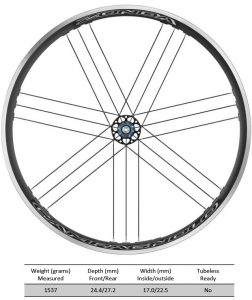
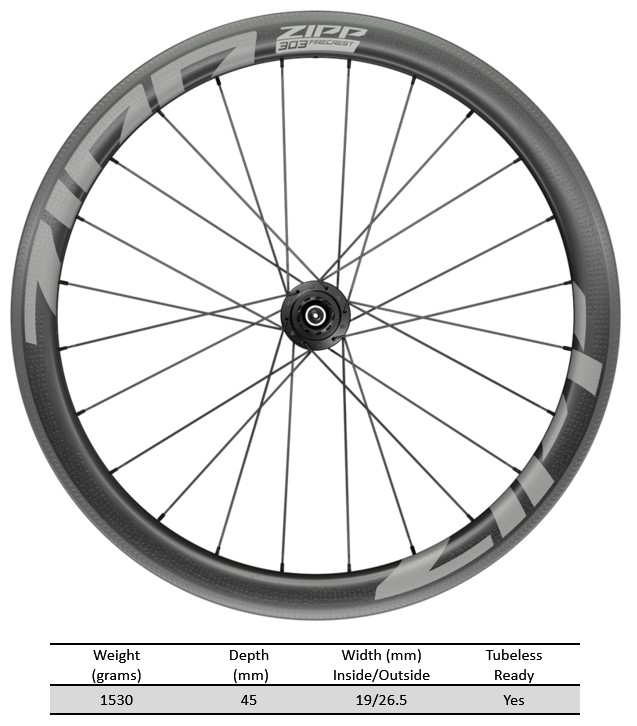

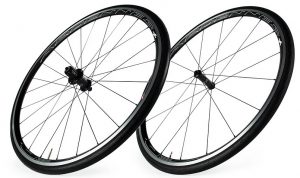
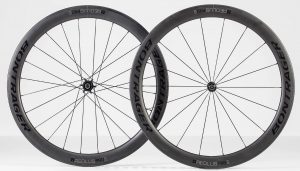
Hi any other rim brake wheels you can recommend? How about the new 303 fire crest rim brake?
How is the bontrager pro 5 compare to the bontrager xxx 4?
Zack, I’ve only recommended those still in production. Fewer and fewer are being made. Neither of those you mention still is though they may be available in some shop’s stock somewhere but not in production. I previously recommended the XXX4 and 303 Firecrest. Steve
Thanks for great article. Gave me a lot to think about as I consider upgrading. Have a DT Swiss RR21 alloy set that have been great and am on the fence between building another set with their RR411’s or trying carbon out. Think I’d probably look at 35mm if I do go carbon. Think I may update hubs this year (DT Swiss 180’s or 240′) and then save up for some Enve 3.4’s. Hopefully they keep making them! Best
Hi! I am looking to upgrade and the local store recommended
this.. They are tubular. Any thoughts? Mavic Cosmic Pro Carbon SL Tubular – QR – Rim Brake
Rodrigo, Probably not. Not a current wheelset; tubular is a hassle. Suggest you read this review about how to choose the best wheelset for you. Steve
Hi, I am 86 kg, not very good performance. 22KM/h on average on 100 km with 1000m climb.
I usually road flat terrain. I would like performance and comfort and feeling of going downhill securely. Good braking performance is also important. Never go to mountain. I can offord a wheel up to 2500€. What is your recommendation ?
What do you think about Black Inc Fifty ? DT Swiss Mon Chasseral 35 ?
Many thanks for your help,
Thanks from France !
Raphael
Raphel, Take a look at this post to help you decide which wheelset is best for you https://intheknowcycling.com/best-road-bike-wheels/. Steve
So many options it’s confusing for some of the most committed enthusiasts. I just burned through my Artemis rim descending cautiously on my new C64. Forced to upgrade my rim wheels already I don’t know what to get. I want new PRs going down and up, I need confident braking since I came from disc brakes. What are your thoughts
Jesse, Sorry to hear about your wheels. Holding onto the brakes too long will challenge most rim brake wheelsets. I try to alternate braking the front and back, never holding either for more than a few seconds. Either go back to alloy rims or go with one of the carbon ones I’ve recommended above. Steve
Thanks for the article. I am pleased to have made a choice narrowed down from two of the sets above. Just through my shopping I was offered the enve ses 3.4 and the Hed Ardennes. Thought only 160 lbs, I chose the latter for the wider interior width, alloy material and lower cost. Lets see how they roll.
Curious to know how you like them as I weigh about the same. I too like the price point and the width as you have pointed out.
Steve, thank you for all of the time you put in to the site.
A question on Zipp 303 NSW’s and whether you kept them for the long term.
I took the plunge in Dec 2020 based on lots of research including your great review and the first 8 months was good other than reinforcing your ongoing feedback on the lack of stiffness which I adjusted my brakes to compensate for.
Since then I have started to get lots of strange hub noises creaking and clicking. My LBS has tried to fix a few times but it keeps coming back. I am curious if you have had kept the rim 303’s and had similar issues. I am quite frustrated ( oh and a spoke broke spontaneously in Dec as well just as I started a ride), and wanted to see if you like the zr1 hub in the Firecrests as an alternative.
Last option is to buy a set of Campy WTO 45’s instead. I am committed to rim brakes for a while to come and they seem to be more rigid and potentially more reliable at a reasonable price, (the Enve’s feel a bit out of reach price wise).
Be great to get your view. Thanks very much.
Chris.
Chris, My group ride leader Dennis is still riding the 303 NSWs I originally reviewed and hasn’t reported any hub or other issues. I’d suggest you take your wheels in for a second opinion perhaps with a mechanic that’s very experienced with those Zipp hubs. The Cognition hubs are unique and not ones every mechanic will know well. The ZR1 hubs seem to be working out fine from what I’ve experienced and heard from others but think the 303 NSW/Cognition wheels are a step above in performance than the 303 FC/ZR1. I’ve got a set of Campy Bora Ultra WTO 45 disc brake wheels I’ll be reviewing this spring. The look and spin beautifully in the stand but, other than that, I don’t have an opinion on them yet. Steve
Steve
Curious to know your thoughts on the 2 way fit Shamal, which allows a tubelesss setup. I’m building up an older titanium frame with Campy, but I am used to the feel and convenience of tubelesss. Or am I better off with HED Ardennes?
Thanks as always
Steve
Steve, If I remember correctly, the Shamal is a feature upgrade of the Zonda. Same rim dimensions with 2-way fit and upgraded hub spec. Nearly 2x the price of the Zonda and same price as the Ardennes. For that price, I’d go with the Ardennes as the rim is a good deal wider and will handle better and be more comfortable than the Shamal with a wider, tubeless tire. Steve
Thanks Steve, appreciate the insight.
Thank you for all this useful information, Steve! Curious why you don’t recommend the Zipp 404 Firecrest rim brake over the Zipp 303 Firecrest rim brake? The 404 weighs a bit more but appears to be significantly more aerodynamic than the 303.
https://www.sram.com/en/zipp/models/wh-303-ftlr-a1
https://www.sram.com/en/zipp/models/wh-404-ftlr-a1
BF, The Zipp 303 is the best in the all-around rim brake wheelset category. The 404 is an aero wheelset, a category of wheels ideal for those riding in the 20mph+/32kph+ range and closer to 25mph/40mph and up before you see more than a few watts of aero benefit. Most aero wheelsets perform best on mostly flat and rolling terrain with short hills no more than a few percent in grade. Our experience with the 404 was that it wasn’t great in crosswinds or as stiff as others in the same depth range. Because of its rim width, its aero performance is optimized with a 25mm tire at the optimum speeds for this wheelset, narrower than most want to ride these days and a tire width that makes for a less comfortable ride. Unfortunately, the wheelsets we tested that rated higher than the 404 aren’t made in rim brake versions anymore. That’s why I don’t recommend a best aero rim brake wheelset in this review. Steve
Hi, thank you for all the work you put in your reviews and articles about wheels and rims.
Have you considered adding Rolf Prima to this list here? Even the latest Eos wheels are available in both rim and disc brake. I’m currently riding a set of Eos 4 and they are an exepctional, durable, fast and extremly well made wheelset. Way ahead of the Zipp 303 Firecrest (which is my backup wheelset) in my opinion!
Oliver, thanks for the feedback. Frankly, I haven’t been testing new rim brake wheelsets as most companies have put all their development efforts into disc brake wheels for the last several years and some of the larger wheelmakers are no longer selling rim brake wheels. I know some smaller brands like Rolf Prima, Boyd and others continue to sell rim brake wheels and I should probably look into who’s doing what and how they compare. Will look into that for a future post. Thanks. Steve
I have a nice TI road bike (Seven) with rim brakes and my old rims (10 years+) are worn and slightly concave so I think time to replace. I’m thinking either Bontrager Aeolus Pro 3 TLR or HED Jet RC 4 Performance.
These would be my main wheels for this bike. I do a lot of group riding in all conditions. I do have hills where I live. I’m 180 lb rider. (I’m also wondering if I should just go with the Ardennes instead as I have a roof rack and thinking switching out wheel set to put on my car to protect CF is a pain…). Not really racing anymore. This bike is road only (have a gravel bike). Braking in rain is a factor as I do sometimes ride in rain.
Thanks for your opinion!
Hi Jason, Just too many considerations to weigh to come up with a useful suggestion without a more extended exchange. I wrote this post to help readers like you decide what the best wheels are best for your situation based on your goals, profile, and budget. https://intheknowcycling.com/how-to-choose-bike-wheels/. If that doesn’t get you there, become a Know’s Club Leader and we can have that exchange. Steve
Thanks for your review! Steve I want to buy Bontrager Aeolus Pro rim brake wheels- what do you think about their braking performance? Is they close to Campa WTO or Zipp? I have some doubts about wet weather braking in it.
Andy, Campag and Zipp are better in the rain but no carbon rim brake wheelset is great in the rain (including those). If you ride in the rain a lot, I’d get an alloy rim brake wheelset like one of those that I recommend above. If you only ride in the rain occasionally, I wouldn’t suggest you buy a wheelset based on its performance in rain. Steve
I ride in the rain occasionally, not often – in my country spring and summer usually not to rainy. So I think Bontrager Aeolus Pro will be my new wheels. Thanks for your advice Steve!
Steve, one more question, please.
I have opportunity to buy one of two wheelset – ZIPP 404 Firecrest (17 mm inner) 2017 model year and Bontrager Aeolus 5 2018 model year.
Both of they in good condition and same price and tubeless is not important for me.
In your opinion – which of this two wheelset is better?
Hi Steve,
Great review. I have been riding Zipp 303 NSW rim clincher wheels for the past 5 yrs without any problems. Have been riding 25 mm 5000’s with tubes. Thinking of moving up to 28 mm 5000 STR tyres with tubes. Would a 28 mm tyre be compatible with my 303 NSW wheelset